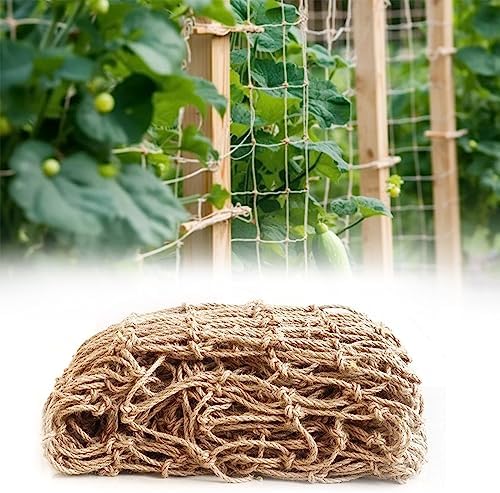- February 21, 2025
- Posted by: wellcoindustries
- Categories: Erosion Control, Jute Mesh
1. Introduction
Gardening naturally with jute netting is more than just a trend—it’s a sustainable, time-tested approach to growing healthier plants while caring for the environment. By combining eco-friendly methods with biodegradable materials, you can reduce waste, improve your soil, and enjoy a bountiful harvest. In this article, we’ll explore how jute netting helps you create a greener garden, backed by practical tips and real-world examples.

2. Understanding the Benefits of Gardening Naturally
2.1. Environmental Advantages
Embracing natural gardening techniques ensures minimal harm to local ecosystems. By avoiding chemical fertilizers and synthetic pesticides, you support beneficial insects, birds, and microorganisms that keep your garden in balance. According to the National Gardening Association, over 35% of gardeners in the U.S. prefer organic methods for their positive impact on biodiversity. This shift toward sustainability preserves soil health, conserves water, and reduces pollution risks in your local community.
2.2. Health and Safety for People and Plants
Gardening naturally promotes the well-being of your family and neighbors. When you forego harsh chemicals, you reduce the risk of contaminants leaching into groundwater or affecting your harvested produce. Additionally, plants grown under organic conditions often yield nutrient-rich fruits and vegetables. As a result, the entire gardening process— from planting to eating—becomes safer and healthier.
3. Why Use Jute Netting?
3.1. Biodegradable and Eco-Friendly
Jute netting is made from the fibers of the jute plant, a naturally renewable resource that decomposes in soil without leaving harmful residues. This means you won’t have to worry about plastic waste sitting in a landfill for years. In fact, some studies indicate that jute-based materials can break down within two to three months in warm, moist soil conditions—making jute netting a highly sustainable option.
3.2. Versatile Applications for Various Garden Needs
In addition to its eco-friendly appeal, jute netting proves incredibly versatile. It serves as a sturdy support for climbing plants like peas and cucumbers, helps stabilize soil on sloped gardens, and can even be used as a decorative accent in flower beds. No matter what your gardening goals may be—improving yields, preventing weed growth, or simply adding visual interest—jute netting can play a crucial role.
4. 5 Tips for a Greener Harvest with Jute Netting
4.1. Tip #1: Provide Strong Support for Climbing Plants
- Select the right netting size: Choose a netting with smaller gaps if you plan to support delicate vines like peas and beans.
- Install properly: Stretch the jute netting between stakes or a frame to create a vertical support system.
- Encourage upward growth: Train vines by gently weaving tendrils through the netting, ensuring they receive adequate sunlight and air circulation.
By using jute netting instead of metal cages or plastic trellises, you’ll keep materials in your garden that can return to the earth, reducing long-term waste.
4.2. Tip #2: Control Soil Erosion on Slopes
- Lay netting on the slope: Spread jute netting over areas prone to runoff or erosion, such as hillsides or raised beds.
- Secure with garden staples: Pin the netting firmly into the ground, ensuring it remains taut and in full contact with the soil.
- Plant cover crops: Sow grasses, clover, or other cover plants on top of the netting. Their roots grow through the mesh and further stabilize the soil.
Over time, the netting will decompose into the soil, leaving behind a strong network of roots that help maintain slope integrity.
4.3. Tip #3: Suppress Weeds Organically
- Block out sunlight: Jute netting laid on top of bare soil helps reduce the amount of sunlight reaching weed seeds.
- Use mulch in tandem: Combine netting with organic mulch—like straw or shredded leaves—to create a protective layer that smothers weed seedlings.
- Maintain air and water flow: Unlike plastic sheeting, jute fibers allow water, air, and nutrients to circulate, ensuring your soil remains healthy.
This method cuts down on the need for chemical herbicides, saving you money while safeguarding your garden’s ecosystem.
4.4. Tip #4: Enhance Mulch and Compost Efficiency
- Retain organic matter: Wrap compost piles or mulch layers in jute netting to keep them contained and well-aerated.
- Promote decomposition: The breathable nature of jute allows moisture and microbes to work efficiently, breaking down organic materials faster.
- Easily incorporate into soil: Once the compost is ready, you can mix both the netting and decomposed matter into the garden bed. The jute will continue to break down, enriching your soil.
By combining jute netting with compost or mulch, you’ll optimize soil fertility while maintaining tidy garden pathways and beds.
4.5. Tip #5: Add a Decorative Touch to Your Garden
- Create natural fences: Drape jute netting along the edges of flower beds or around vegetable patches for a rustic boundary.
- Hang planters or pots: Use jute netting as a base for hanging basket displays, blending function with a visually pleasing design.
- Experiment with layering: For a more artistic look, layer netting with climbing flowers or foliage to achieve a textured, organic aesthetic.
Beyond its practical uses, jute netting brings natural charm to any outdoor space, proving you don’t have to sacrifice style while gardening sustainably.
5. Conclusion
Gardening naturally with jute netting offers numerous environmental, health, and practical benefits. From providing essential support for climbing plants to aiding in soil stabilization and weed control, jute netting is a versatile tool that fits seamlessly into an eco-friendly gardening approach. It breaks down harmlessly in the soil, ensures strong plant growth, and adds a decorative touch to your outdoor spaces.
Ready to embrace a greener garden? Try these jute netting tips in your next project and let us know how it goes. Share this article with fellow gardeners looking for sustainable solutions, and join our community newsletter for more insights on natural gardening techniques. Your garden—and the planet—will thank you!
